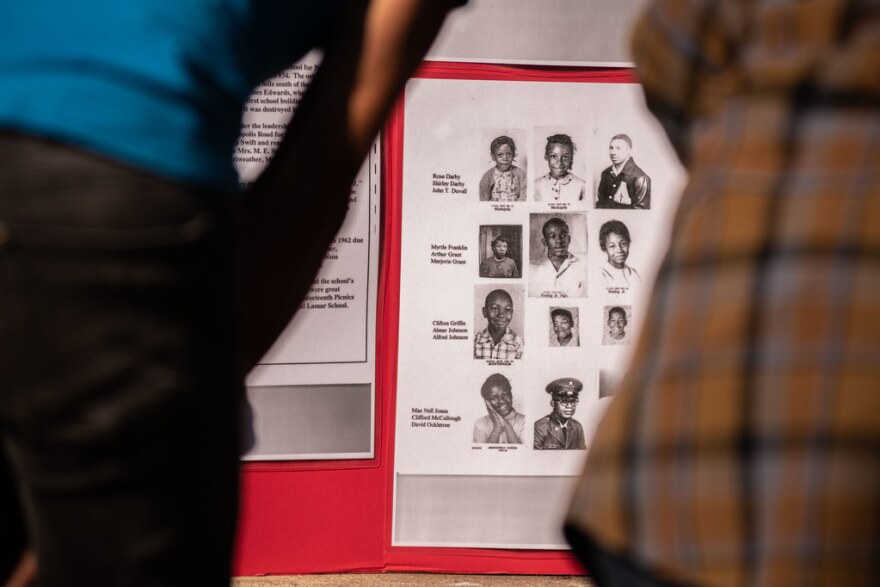Clifton Griffin walked into the historic Montopolis Negro School for the first time in more than 40 years on Saturday. He was a student at the all-Black school in the early 1950s before the U.S. Supreme Court called for schools to be desegregated.
Stepping into the small three-room structure, Griffin pointed out classrooms and the combined cafeteria and library. He said chalkboards lined the walls of the classrooms, which seated about 20 children each.

“The windows are still there,” he said, looking at the now boarded-up panes. “We’d stand up and look out the windows.”
The building is one of the last Black-only rural county schools that's still standing in the Austin area. After closing in 1962, the property changed hands from the Austin Independent School District to a private owner to the Montopolis Church of Christ to a property developer.
In 2016, the community began pushing for the school to become a historic landmark. The City of Austin used eminent domain to take the property back from the developer in 2019 in an effort to preserve it as a museum and historic asset.
On Saturday, the Austin Parks and Recreation Department held an open house so community members could see how the old school building looks today and imagine how they want it to look going forward. More than 50 former students and community members attended.

Kim McKnight, who leads PARD’s Historic Preservation and Heritage Tourism Program, said the Montopolis community has been at the forefront of saving the property.
“This is their property,” she said. “I think we consider ourselves facilitators of the process and really here to try to bring the support and resources so that they can be in the leading role of a planning process.”
McKnight said $150,000 has been set aside for that planning process.
She said people have suggested using the building as a meeting space and public garden.
“I think people want to see activity, not just something frozen in amber,” she said.

Griffin, who has been pushing for the school to become a historical marker, is happy the city will turn it into a museum for people to visit and learn from.
“I hope [visitors] would be able to make a comparison of what was thought to be separate and equal back in the days of segregation,” he said.
Griffin said his grandmother was a cook in the cafeteria of the Colorado School, an all-white school near the current Austin airport.
“They had new books and they had new furniture and stuff,” he said. “And we had the hand-me-down books. When we got textbooks, they would have five or six names already in them."

Griffin said the Montopolis School did have multimedia resources like a film projector and record player. He saw television for the first time ever at school, watching the inauguration of Dwight D. Eisenhower.
Griffin said teachers were strict and wanted to prepare students for the future.
“We were kind of taught that we had to be a little above what was average if we wanted to succeed,” he said.

Vastine Fisher, who also attended the school in the 1950s, recalled growing up having to use restrooms and the one theater designated for Black people.
“Anywhere on Sixth Street, we could not drink at the water fountain,” Fisher said. “We had a certain water fountain that said ‘Negroes.’”
He said he doesn’t think that word should stay in the name of the school.
“That’s that old word we used way back,” he said. “That’s just my feeling. If we’re going to do it, call it what it is. We’re Black people.”
Bobby Green, who attended the school, still lives in the neighborhood. He said it was touching to return to the building after more than 50 years.
“It was something that was easy to describe, [but] it was just difficult to accept,” he said of his experience at the school. “We didn’t have any other choice to go any other place.”

Green said the museum will show visitors what people before them had and how they had to live.
“Hopefully they’ll be able to look at it with a positive attitude and fulfill all the things that wasn’t fulfilled by us and those that went before us,” he said.
McKnight said the city has not identified the next steps in the planning process, but emphasized the community would be in the driver’s seat.
If you found the reporting above valuable, please consider making a donation to support it. Your gift pays for everything you find on KUT.org. Thanks for donating today.












